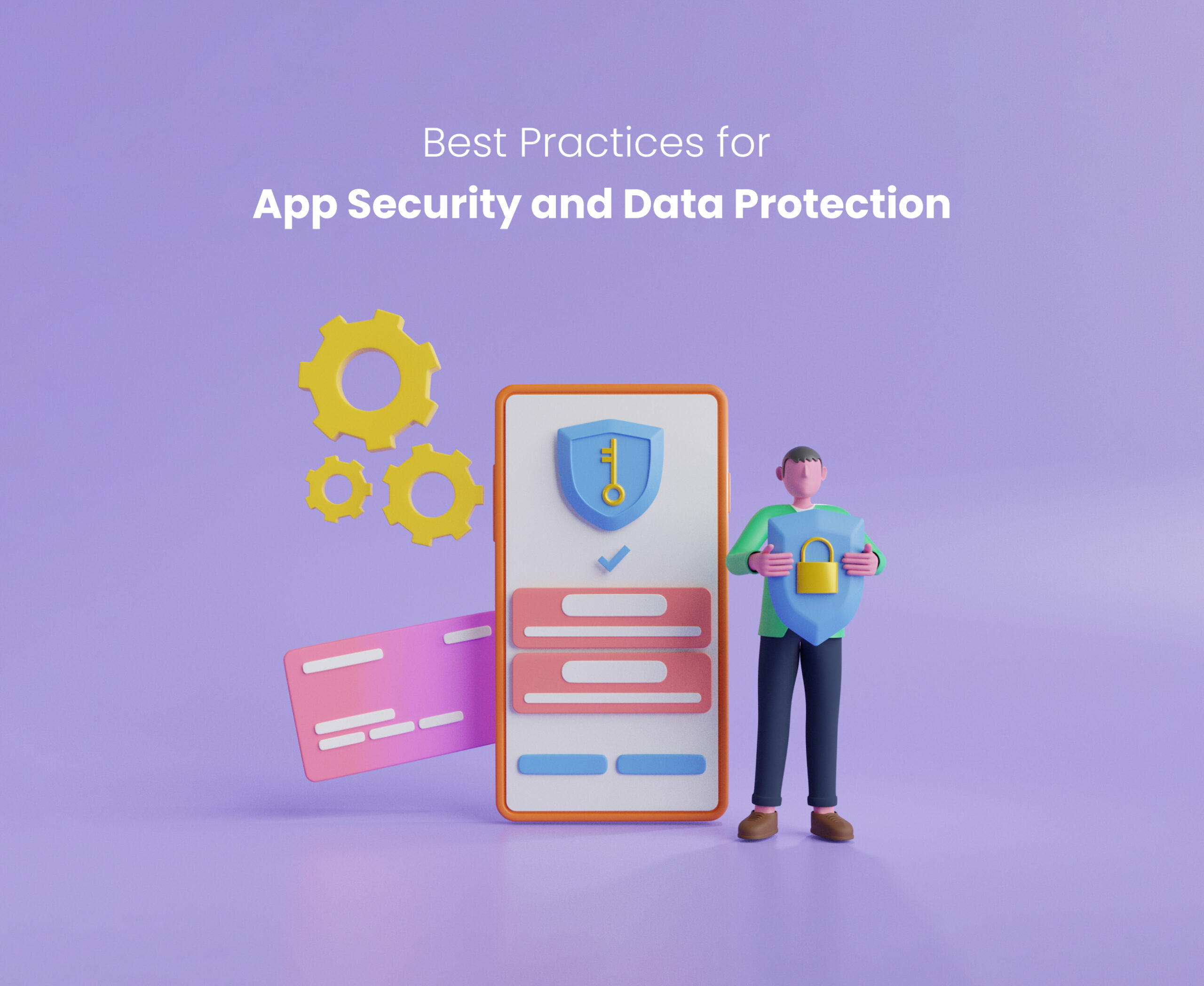The rapid growth of app development in recent years has made applications a crucial part of our daily lives, with millions of mobile and web apps available. However, this growth has also led to an increase in security issues. Sometimes developers or a mobile app development company may think their applications are secure, but they still end up releasing code with vulnerabilities. The emergence of the internet of things (IoT) has also contributed to this problem as it has automated manual processes. But that would not happen if you keep in mind certain app security practices. So let’s dive in!
Table Of Content Common Application Security Challenges Best Practices for App Security Use Secure Coding Practices Threat Assessment Manage Containers Limit The User Access To Data Update and Patch Authentication At A High Level Security Of The Backend Is Crucial Data Storage Should Be Minimized App Security-related FAQs
The Most Common Application Security Challenges
Several challenges contribute to security issues in applications, including:
- A shortage of qualified mobile app developers leads to amateur programmers creating mobile apps that may have vulnerabilities.
- Inefficient use of testing tools, which can miss potential vulnerabilities
- Web applications are the primary attack vector for data leaks, making it important for businesses to be aware of APIs in their apps and the associated risks. Many API breaches occur in companies unaware of these interfaces’ presence in their solutions.
- Many organizations do not follow best practices for securing their software and do not implement a DevSecOps process, which is necessary for quickly addressing and resolving security issues.
- Open-source software, used in 96% of enterprise market apps, can also contain vulnerabilities that pose a threat. It’s essential to follow a checklist of app security best practices to avoid these issues and improve the safety of apps. These best practices are similar for web, mobile, and desktop software development.
Best Practices for App Security
Use Secure Coding Practices
Using secure coding practices is an essential best practice for ensuring the security of an app. Secure coding practices involve:
- Following best practices and guidelines when writing.
- Testing.
- Maintaining code to ensure it is free of vulnerabilities and weaknesses that attackers could exploit.
Some key elements of secure coding practices include:
- Input validation: Ensuring that all input to the app, whether from users or external sources, is properly validated and sanitized to prevent malicious input from being processed.
- Error and exception handling: Properly handling errors and exceptions that may occur during the execution of the app can help prevent sensitive information from being disclosed to attackers or other unauthorized parties.
- Authentication and authorization: Implementing strong authentication and authorization measures can help prevent unauthorized access to the app and its resources.
- Cryptography: Using cryptography correctly and appropriately can help protect sensitive data and communications.
- Resource management: Properly managing resources such as memory and system resources can help prevent vulnerabilities from being introduced into the app.
By following secure coding practices, developers can help ensure that their app is as secure as possible and minimize the risk of vulnerabilities being introduced or exploited. It is important for developers to continuously educate themselves on the latest best practices in secure coding and to review and test their code for vulnerabilities regularly.
Threat Assessment
To assess the threats to your application, you should consider how hackers could potentially breach it and whether you have measures in place to detect or prevent attacks. You may need to use additional tools to protect yourself. It’s important to be realistic about the level of security you can achieve, as nothing is completely unhackable. You should also be honest about what your team can manage regarding security measures, as setting unrealistic goals can lead to them being ignored. To judge your risk, you can use the formula: Risk = Probability of Attack x Impact of Attack.
Manage Containers
Locking down your containers is crucial for ensuring their security. One way to do this is by using a digital signature tool like Docker Content Trust to sign your container images. It’s also a good idea to run regular scans for open-source vulnerabilities to catch any potential issues.
Limit The User Access To Data
Another vital step is limiting access to data by determining who needs access to specific resources, creating access rules, and promptly removing active credentials when access is no longer needed.
Don’t Forget To Update and Patch
As the saying goes, “an ounce of prevention is worth a pound of cure,” so it’s essential to regularly update and patch your software to fix known vulnerabilities. Just be sure to plan ahead and consider the impact on API compatibility when upgrading to new versions.
Authentication At A High Level
“Lax” authentication can lead to security breaches, so developers must design apps that only accept solid alphanumeric passwords. To further enhance security, you can require users to change their passwords periodically, or for susceptible apps, you can even implement biometric authentication using fingerprints or retina scans. Encouraging users to prioritize authentication can go a long way in helping you “lock the barn door before the horse gets out” and prevent security breaches.
Security Of The Backend Is Crucial
Mobile apps often rely on a client-server mechanism, so it’s important to have measures in place to protect against attacks on backend servers. Don’t assume that only the app you’ve programmed can access APIs – it’s essential to verify all your APIs for the specific mobile platform you’re using, as the methods for authenticating and transmitting data can vary. In other words, don’t leave the “back door” to your backend servers unlocked and vulnerable to attack.
Data Storage Should Be Minimized
To protect sensitive data, it’s generally best practice to avoid storing it on the device if possible. If you do need to store it, consider using encrypted data containers or key chains to keep it secure. You should also minimize the log by adding an auto-delete feature that removes data after a specific time. With the increasing risk of malicious activity, mobile app security is a top concern for developers and can make users hesitant to install untrustworthy apps. By following these best practices, you can develop a secure mobile application that your customers can rely on.
App Security-related FAQs
What is app security?
Application security, or app security, protects applications from vulnerabilities, threats, and attacks. This can include identifying and fixing code vulnerabilities, implementing secure authentication and access controls, and protecting against network and data breaches. App security aims to ensure that applications are safe and resistant to attacks and protect sensitive data and user information.
What app security testing tools are recommended?
Many different tools and methods can be used to test the security of applications. Some popular tools include:
1. Static code analysis tools: These tools analyze source code and look for vulnerabilities without actually executing the code.
2. Dynamic analysis tools: These tools test applications by executing them and analyzing their behavior.
3. Penetration testing tools: These tools simulate attacks on an application to identify vulnerabilities.
4. Network scanning tools: These tools scan networks and identify vulnerabilities in networked applications.
It’s worth noting that no single tool can provide complete coverage, so it’s often recommended to use a combination of tools and approaches to test an application’s security thoroughly.
What are the main approaches to application security testing?
There are several approaches to testing the security of apps. Some common approaches include:
1. Black box testing: This approach involves testing an app without knowing its internal design or implementation.
2. White box testing: This approach involves testing an app with knowledge of its internal design and implementation.
3. Gray box testing: This approach involves testing an app with partial knowledge of its internal design and implementation.
Other approaches to app security testing include:
1. Manual testing: This involves manually reviewing an app for vulnerabilities.
2. Automated testing involves using tools and software to scan an app for vulnerabilities automatically.
It’s often recommended to use a combination of these approaches to thoroughly test an app’s security. Or just contact us to develop secure mobile app✔ solutions.




